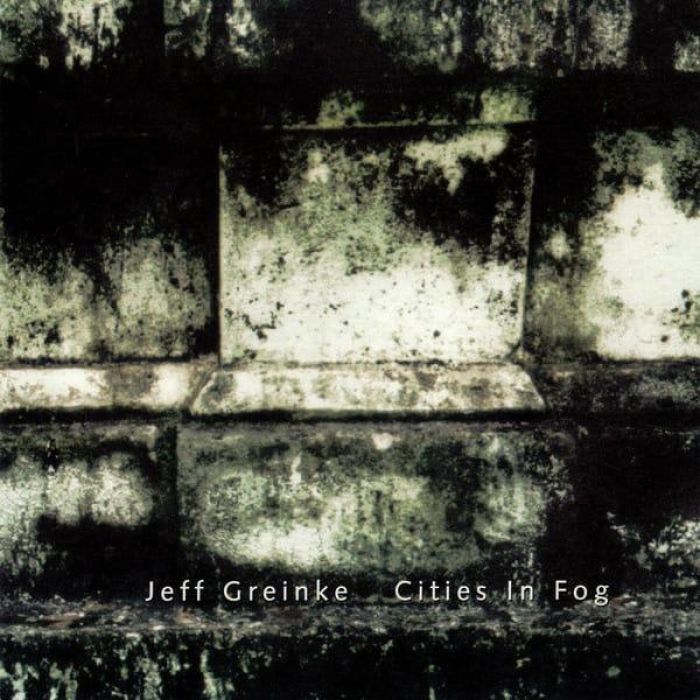Cities in Fog by Jeff Greinke (Review)

Inspiration can come to musicians in many shapes and forms. It could be a long-cherished childhood memory, a painting, a favorite book, or in some case, sex and drugs. But Jeff Greinke finds inspiration in something most of us wouldn’t think of; the sound of a truck driving on the intersate. Seems that in 1982, Greinke was at a rest stop somewhere in the wide open spaces of Montana, when he heard a huge drone sweeping across the landscape. The drone was produced by a single truck, and as he put it, he “became fascinated by the richness and beauty of its sound and the way it held my interest.” Greinke soon became interested in the way that the environment — the shape of the land between him and the truck, for example — can influence sounds, and began incorporating that into his work.
Such a theory might lead one to think that Cities in Fog is an expansive, drifting piece that evokes those wide open landscapes. However, Greinke soon became fascinated with other sound sources as well, when, on long nighttime walks, he’d listen to the nocturnal sounds of the industrial areas he lived by at the time. It’s this environment that Cities in Fog more closely resembles.
To get a good indication of this double album’s general sound, simply look at some of the song titles; “Moving Through Fog,” “Crevice,” “Among Icebergs,” and “Nightcrawler.” What sorts of images do those titles conjure up in your mind? Chances are, it’s not some expansive Montana plain. The pieces on Cities in Fog conjure up danker, more industrial vistas, like the abandoned factories and rundown machinery that dotted the landscapes of Andrei Tarkovsky’s Stalker.
Better yet, imagine a harbor city on the verge of collapse (à la The City of Lost Children), buildings and boats worn down by the ravages of the sea and perpetually enshrouded by a greenish-grey fog. The fog is so thick that it obscures everything, even the sounds of the city. The city’s machinery clatter and clang away, but they’re muffled. The sounds of the ships, the sound of the waves on the breakers — you can hear them, but they sound distant, blurred to the point that you’re not sure if they’re real or not. And sometimes, in the middle of the night, you swear you can hear the voices of drowned sailors who lost their lives on the treacherous rocks surrounding the city. Or maybe it’s just the perpetual gloom of the city playing tricks on your mind.
Greinke is quite adept at creating such vistas in your mind with his sounds. But there’s very little variety from one track to the next. This is truly ambient music, and serves better for passive listening, though you may not want to listen to this at night. It’s not that it’s really all that dark and evil — not in Lustmord sense, anyways — but there is an undercurrent of unease that permeates the entire album. I doubt Greinke is out to terrify you with his music, but I wouldn’t confuse this with something more relaxing à la Vidna Obmana. I made the mistake of trying to sleep to Cities in Fog once, and had the same experience as when I used Lucid as a sleeping aid. Let’s just say my rest was less than peaceful.
The first disc (appropriately titled “Cities in Fog 1”) was recorded in 1985, while the second disc (also appropriately titled “Cities in Fog 2”) was recored in 1995. But if you expect Greinke’s sound to have changed or developed at all in those 10 years, you might be disappointed. Both discs contain the same dank, industrial ambience. At times, you hear what could be fragments of songs, a stray melodic fragment or two might become briefly audible, but it quickly slides back into the murky depths before it really manifests itself.
Occasionally the music does contain delightful surprises. The shimmering “Metal From the Sky” is the only bright spot, literally, on the first disc, and sounds practically transcendant. “City Light” also brightens the atmosphere somewhat, with more recognizable melodies and a more calming, ethereal sound. But much of the music seems caught within its own miasma, too thickly enshrouded by its sonic fog to hold your interest for very long.